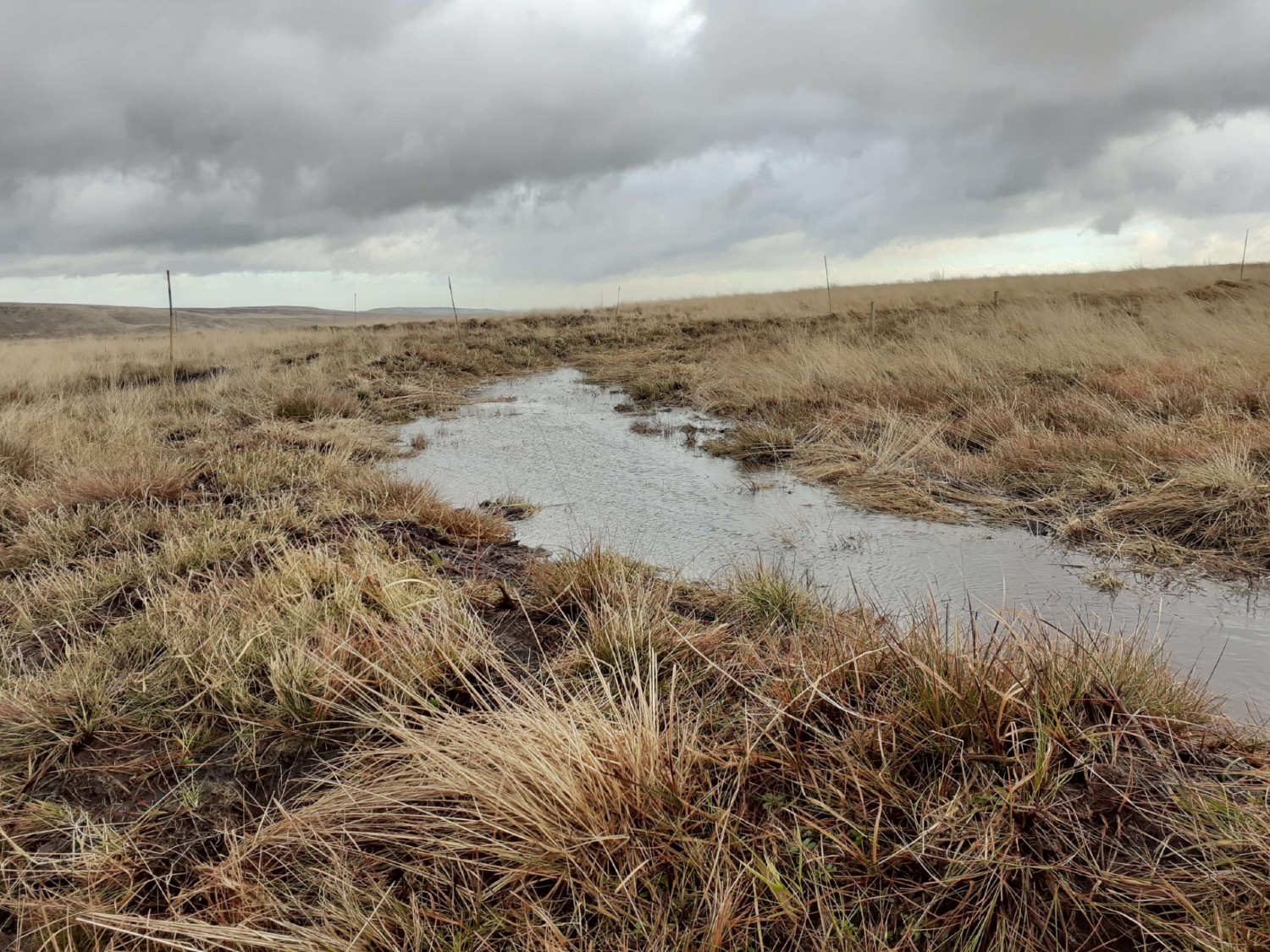Moors for the Future Partnership is pioneering and testing a new technique to improve the condition of blanket bog habitat.
The aim of the trial is to discover if constructing bunds can improve the health of blanket bogs, returning them to the healthiest condition a bog can be in (known as ‘state 6’ active blanket bog).
In this favourable condition, the blanket bog habitat is rich in peat forming vegetation, particularly sphagnum moss but also cotton grasses and some other species too. The bunds have been designed to reduce the flow of water from the hills. They are long, low mounds which retain water in shallow pools behind them.
Sphagnum moss has been planted behind and on the bunds. The trial will measure how well the sphagnum grows. Sphagnum thrives in wetter areas, so the bunds are expected to improve the survival and growth of this key bog-building moss.
It is hoped that this will result in multiple benefits to society and wildlife including:
- Carbon being sequestered and stored as peat
- Slowing the flow of water from the hills, potentially reducing flooding in valleys below
- Wetter moors, with a higher water table, which stays higher for longer into dry spells reduce the availability of surface fuel. This is a critical step towards lowering the likelihood of wildfires. When wet, fuels such as peat and vegetation do not ignite as quickly or burn so severely.
- Improved biodiversity and better habitat for moorland species (especially a reduction in Molinia (purple moor grass) and increase in sphagnum mosses and other peat forming vegetation)
- Improvement in the storage and quality of water leaving the moor
- Increase in the amount of peat (and therefore carbon) being kept on the moor (and not being eroded) – known as sediment accumulation

The trial is designed to measure the impact of the bunds in the following ways:
- 2x2m vegetation quadrats set up behind the bunds will be used to monitor the impact on vegetation, including Molinia (purple moor grass), sphagnum and other species.
- Automated and manual dipwells will monitor water table height (how close the water is to the surface of the ground).
- Peat anchors will monitor sediment accumulation (whether peat is being trapped behind the bunds, rather than being washed away into rivers and reservoirs).
The bunds were constructed in February 2020 and it is hoped that within a year we will be able to see results from the hydrology data (dipwells). Other outcomes will take longer to become clear, and the Partnership will be undertaking long-term monitoring of the site.
The trial is being carried out in partnership with the National Trust on their Marsden Moor estate, as part of the MoorLIFE 2020 project.